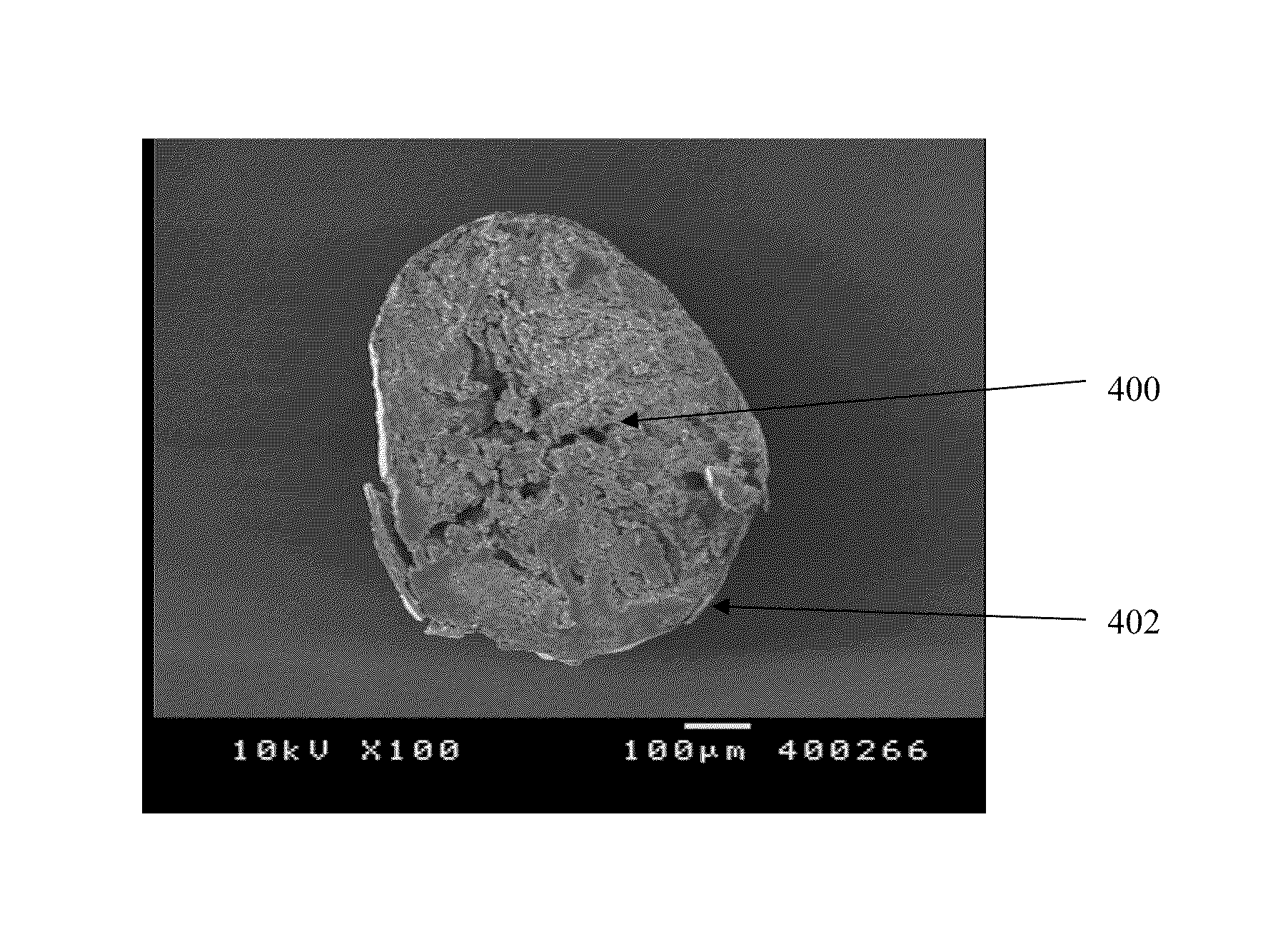Hydrophilic matrix beadlet compositions with enhanced bioavailability
a technology of hydrophilic matrix and composition, applied in the field of hydrophilic matrix composition, can solve the problems of lutein microcrystal solubility, low solubility, and high cost of microencapsulation, and achieve enhanced bioavailability, enhanced bioavailability, and low viscosity
- Summary
- Abstract
- Description
- Claims
- Application Information
AI Technical Summary
Benefits of technology
Problems solved by technology
Method used
Image
Examples
example 1
Preparation of Carotenoid Crystals
[0097]The preparation of carotenoid concentrate is described in Indian Patent Application No. 622 / MAS / 2002 (U.S. Pat. No. 6,737,535), the disclosures of which are incorporated by reference herein, and is summarized as follows.
[0098]Commercial grade marigold extract (57.98 g) containing 11.54% free lutein-zeaxanthin content (by spectrophotometric method) was mixed with potassium isopropyl alcoholate (prepared by dissolving 15 g potassium hydroxide in 175 ml isopropanol.) The saponification mixture was heated and maintained at 70° C. for a period of 3 hours. The degree of hydrolysis was monitored by HPLC during the saponification stage. Isopropanol was distilled off under reduced pressure and the solids obtained were stirred with 230 ml of water at room temperature. The mixture was taken into a reparatory funnel and extracted with equal volume of ethyl acetate (3 times). Ethyl acetate layer was collected and washed with distilled water for removing th...
example 2
Preparation of Hydrophilic Matrix Carotenoid Beadlets
[0099]
TABLE 1Composition of carotenoid matrix beadlets using formula 1 to 7Sr.FormulaNoIngredients12345671Carotenoids10.0810.0810.4310.0810.0810.0847(Free Lutein +Zeaxanthinconcentrate)2Non pareil25.6454.8648.5846.9549.5010sugar3Microcrystalline0000049.50cellulose4Low viscosity10.0810.0810.4310.0810.0810.0823.5HPMC5Polyvinyl29.23000000pyrrolidone6Ascorbyl1.111.111.181.181.181.181Palmitate7Tween 80007.557.555528Crospovidone001.873.53.53.51.59Tocopherol3.163.163.283.233.233.232.3mix10Sodium starch0.770.7700000glycolate11Docusate4.024.0200000Sodium12Sodium lauryl1.371.371.081.781.781.781.03sulphate13Tapioca starch12.8212.8212.8213.9413.9413.941014Aerosil000.54000015Sodium1.051.061.041.041.041.041Ascorbate16Talc0.670.671.210.670.670.670.67Total100100100100100100100
Process for the Preparation Using Formula 1-5 and Formula 7:
[0100]Carotenoid is dispersed in non-polar solvent and a quantity of antioxidants, surfactants, disintegrants, bi...
example 3
Formulation of Tablets Using Carotenoid Beadlets
[0117]
TABLE 4Composition of tablets containing beadletsSr.No.IngredientsQty mg / tab1Beadlets of Formula 31602Macrocrystalline cellulose6303Vitamin premix1304Sodium starch glycolate505Talc106Magnesium stearate107Total1000
Process for Preparation of the Tablets
[0118]Beadlets of formula 3, vitamin premix and other excipients are weighed as per the given formula. The vitamin premix and excipients except magnesium stearate are passed through a 40 mesh sieve and blended well in a suitable blender. Weighed amount of beadlets are added in the above blend and mixed further for 10 minutes. The blend is lubricated with magnesium stearate and talc. The lubricated blend is compressed in tablets with hardness of 7-9 kg / cm2.
Stability Study of the Tablets
[0119]The tablets obtained from three reproducible batches using formula of example 3 are packed in sealed aluminium pouch and incubated in stability chambers. Accelerated stability study was carried ou...
PUM
| Property | Measurement | Unit |
|---|---|---|
| viscosity | aaaaa | aaaaa |
| viscosity | aaaaa | aaaaa |
| viscosity | aaaaa | aaaaa |
Abstract
Description
Claims
Application Information
 Login to View More
Login to View More - R&D
- Intellectual Property
- Life Sciences
- Materials
- Tech Scout
- Unparalleled Data Quality
- Higher Quality Content
- 60% Fewer Hallucinations
Browse by: Latest US Patents, China's latest patents, Technical Efficacy Thesaurus, Application Domain, Technology Topic, Popular Technical Reports.
© 2025 PatSnap. All rights reserved.Legal|Privacy policy|Modern Slavery Act Transparency Statement|Sitemap|About US| Contact US: help@patsnap.com



